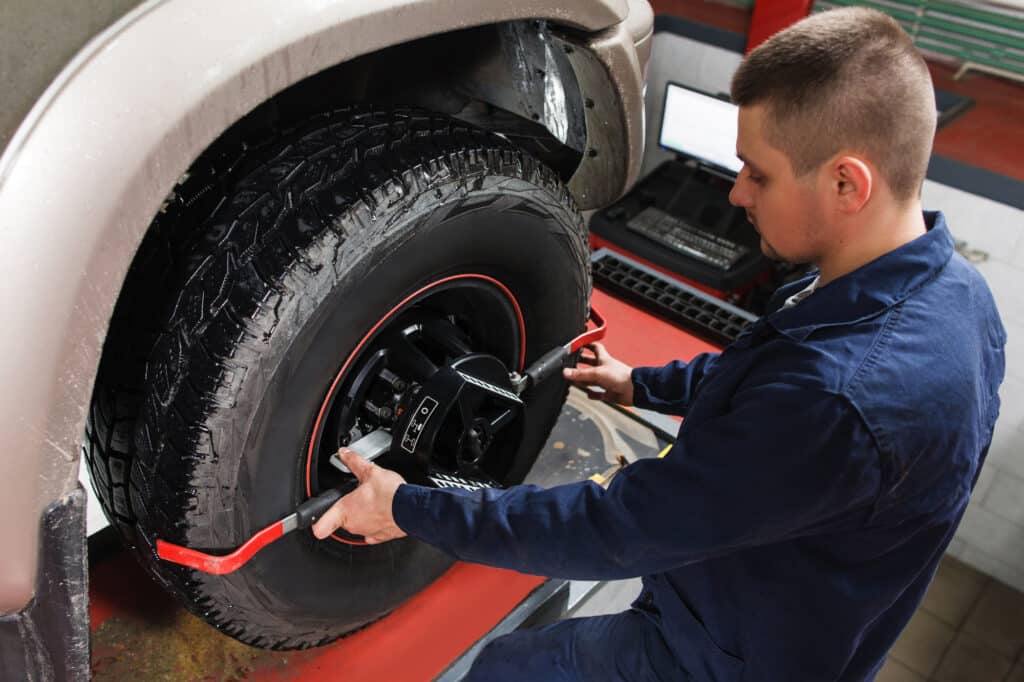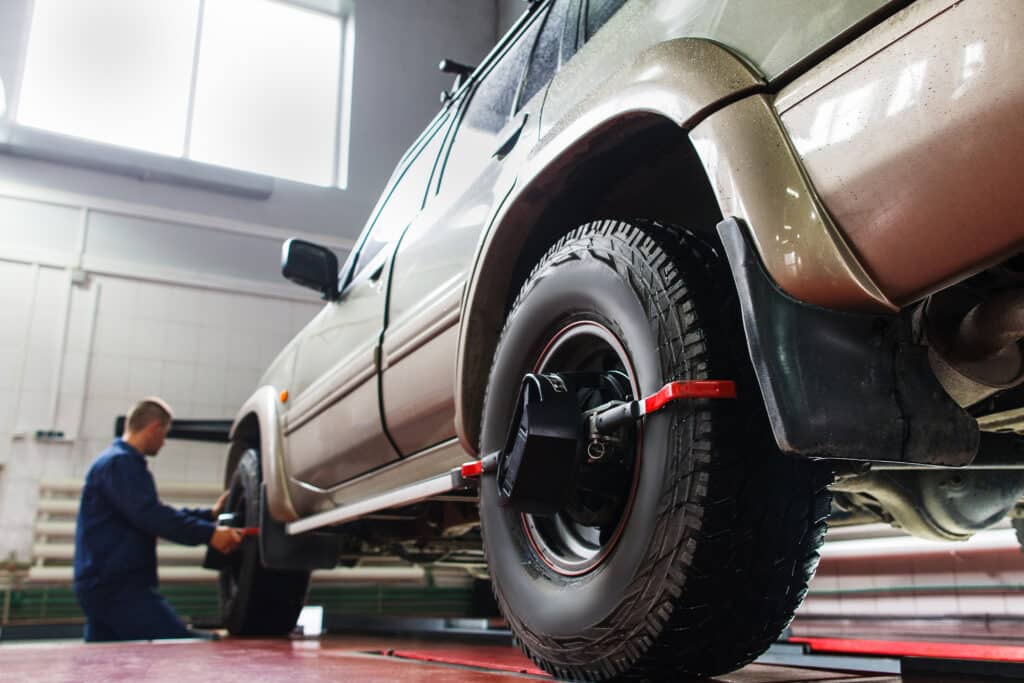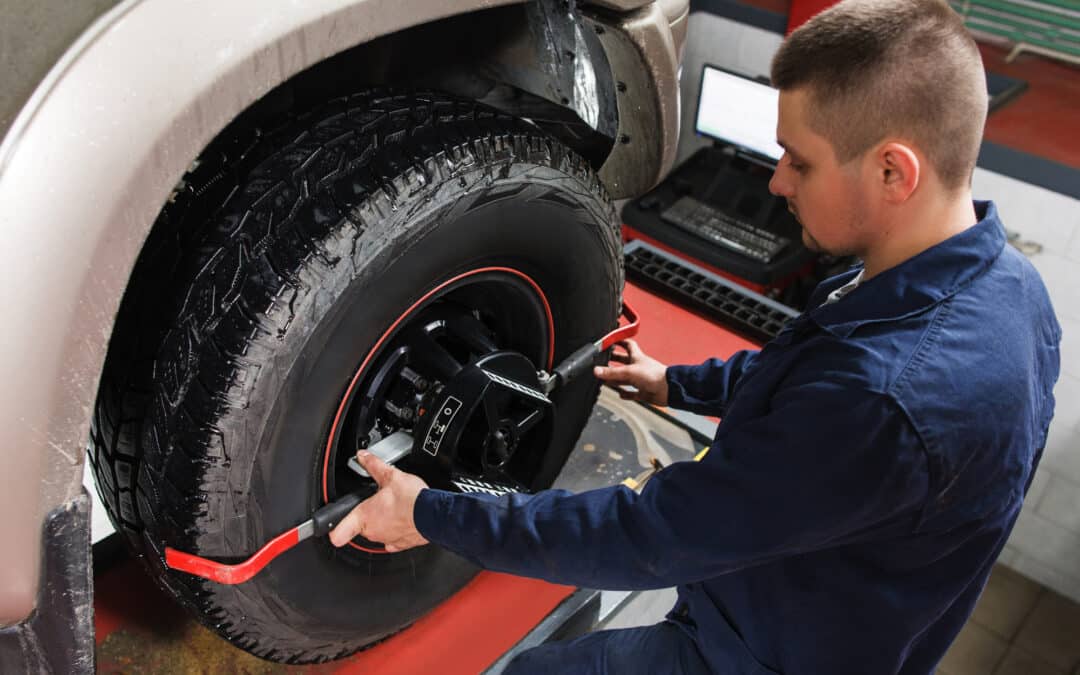Why Tire Rotation is Critical for the Longevity of Your Tires
Ensuring your vehicle runs smoothly involves more than just engine checks and oil changes. One often overlooked but crucial aspect of vehicle maintenance is tire rotation. For those looking to extend the life of their tires while maintaining optimal safety and performance, understanding why tire rotation is critical. In this guide, we’ll explore why tire rotation matters, how it benefits your vehicle, and signs that it’s time for a rotation. Plus, we’ll highlight how Accuracy Automotive can assist in keeping your tires in tip-top shape.
Understanding Tire Wear Patterns
Tire wear patterns can tell a lot about the health of your tires. The types of wear include even wear, cupping, and uneven wear. Even wear indicates well-maintained tires, while cupping and uneven wear can signal issues like misalignment or poor driving habits. Several factors influence tire wear, including alignment, driving habits, and road conditions. Regular tire rotation can help manage these factors, ensuring even wear across all tires.
- Types of Tire Wear: Even wear is the goal of all tire maintenance efforts. However, cupping, where small dips appear around the tire tread, and uneven wear, where certain areas of the tire tread wear faster than others, can occur due to various causes. These issues can arise from improper wheel alignment, inconsistent tire pressure, or harsh driving habits.
- Factors Influencing Tire Wear: Alignment plays a significant role in tire wear. If your tires are not aligned correctly, they may wear unevenly. Driving habits such as frequent hard braking or acceleration also contribute significantly to tire wear. Similarly, rough road conditions can accelerate tire degradation, underscoring the importance of regular maintenance and tire rotation.

Tire Maintenance Service
The Mechanics of Tire Rotation
Tire rotation involves moving the tires from one position on the vehicle to another, ensuring even wear and extending tire life. There are several rotation patterns, including cross, front-to-back, and side-to-side. Each pattern serves different vehicle types and tire conditions, making it essential to choose the right one for your vehicle.
- Definition of Tire Rotation: Tire rotation redistributes the wear your tires experience, helping them last longer. By rotating tires, you ensure that each tire experiences all positions on the vehicle, balancing the wear and enhancing the longevity of your tire set.
- Rotation Patterns: Common tire rotation patterns include cross, front-to-back, and side-to-side. Cross patterns are suitable for vehicles with non-directional tires of the same size. Front-to-back patterns are helpful for directional tires, while side-to-side rotation suits staggered wheel sizes. Choosing the correct pattern ensures balanced tire wear and optimal vehicle performance.
Benefits of Regular Tire Rotation
Regular tire rotation offers numerous benefits, enhancing the lifespan of your tires, improving vehicle handling, and ensuring safety. Statistics show that tires last significantly longer with regular rotations, offering better value for your investment.
- Enhanced Tire Lifespan: Tires can last up to 30% longer with regular rotation. This not only saves money in the long run but also optimizes the performance of your tires, providing a smoother driving experience. Routine rotations ensure that wear is evenly distributed across all tires, maximizing their utility.
- Improved Vehicle Handling: Regularly rotated tires contribute to balanced vehicle handling. Tires with even wear provide better grip and stability, enhancing handling in diverse driving conditions. By promoting uniform wear, tire rotations help maintain consistent vehicle performance, ensuring a more reliable driving experience regardless of the road conditions.
- Increased Safety; Even tire wear leads to better traction and braking performance, crucial for safe driving. Rotating your tires regularly helps ensure all tires have similar wear levels, reducing the risk of blowouts and maintaining consistent traction on different road surfaces. This proactive approach enhances overall safety.
The Science Behind Tire Rotation
Understanding the science behind tire rotation involves examining wear distribution and the consequences of neglecting this essential maintenance practice. Weight distribution and vehicle dynamics create uneven wear patterns, which rotation can help manage.
- Wear Distribution: Due to vehicle weight distribution and dynamics, certain tires bear more load, leading to uneven wear. For instance, front tires often endure greater wear due to braking and steering, impacting longevity. Regular rotation balances these effects, ensuring all tires wear evenly over time and maintaining optimal performance. This practice maximizes tire life and vehicle stability.
- Impact of Neglected Rotation: Failing to rotate tires can lead to reduced traction, increased risk of blowouts, and uneven wear. Neglecting this maintenance compromises safety and performance, as certain tires wear out faster, affecting handling. A regular rotation schedule is crucial to maintaining optimal balance and safety, ensuring consistent traction and reducing unexpected tire failures.

Maintaining Tire Rotation
Signs That It’s Time for a Tire Rotation
Recognizing the signs that indicate the need for tire rotation is essential for maintaining tire health. Visual and sensory indicators can alert you to the necessity of this service.
- Visual Indicators: Look for uneven tread wear or visible balding on your tires. These visual cues often indicate the need for rotation and potential underlying issues such as misalignment or improper inflation. Addressing these signs early can prevent further damage and maintain safety.
- Feel Indicators: If you notice vibrations or your vehicle pulling to one side while driving, it might be time for a tire rotation. These sensory indicators suggest uneven wear patterns that require attention. Timely rotation ensures even wear, enhancing vehicle stability and safety.
Recommended Rotation Schedule
Following a recommended rotation schedule helps maintain tire health. Standard guidelines and manufacturer recommendations provide a framework for this essential maintenance task.
- Standard Guidelines: It is generally recommended to rotate tires every 5,000 to 7,500 miles. This interval coincides with typical oil change schedules, simplifying the process by combining maintenance tasks. Consistently adhering to this recommendation helps ensure balanced tire wear and maximizes their lifespan, ultimately enhancing vehicle safety and performance.
- Manufacturer Recommendations: Each vehicle manufacturer might provide specific guidance on tire rotation tailored to their models. Consulting your owner’s manual is crucial to follow the correct rotation patterns and intervals. Adhering to these recommendations ensures your vehicle’s tires are aligned with manufacturer standards, enhancing both safety and operational efficiency.
The Role of Alignment and Balancing
Tire alignment and balancing are integral to maintaining even tire wear and complement the rotation process. Misalignment and imbalance can lead to uneven wear and reduced performance.
- Connection Between Alignment and Tire Wear: Misalignment can cause tires to wear unevenly, leading to the necessity for more frequent rotations. Proper alignment helps maintain even wear across all tires and extends their life significantly, ultimately improving both handling and safety. Regular checks ensure that alignment issues are identified and addressed promptly.
- Importance of Balancing: Balancing ensures that the tire and wheel assembly’s weight is evenly distributed, preventing vibrations that can lead to uneven wear and reduced tire performance. Conducting balancing alongside tire rotations ensures optimal results, enhancing ride comfort and stability, while contributing to the overall longevity of your tires and vehicle.

Auto Alignment Service
DIY vs. Professional Tire Rotation
Considering whether to DIY or seek professional service for tire rotation depends on various factors. While DIY can be cost-effective, professional service offers expertise and thorough inspection.
- When to DIY: For those comfortable with vehicle maintenance, rotating tires yourself can be feasible. Ensure you have the necessary tools, such as a jack and torque wrench, and follow safety precautions to perform the job correctly. Refer to your vehicle’s manual for guidance and proper rotation patterns.
- Benefits of Professional Service: Professional tire rotation services, like those offered by Accuracy Automotive, provide expert knowledge and comprehensive inspections. These services can identify potential issues beyond simple rotation needs, such as alignment concerns or treadwear irregularities, ensuring your tires are in peak condition for a safer driving experience.
How Accuracy Automotive Can Help
Accuracy Automotive offers comprehensive tire maintenance services, ensuring your tires remain in top condition. Our team of experts provides quality care and routine checks during tire rotations.
- Overview of Services: Accuracy Automotive specializes in tire rotations, balancing, and alignment, offering a full range of services to keep your vehicle running smoothly and safely. Our comprehensive approach ensures every aspect of your tire’s maintenance is addressed, enhancing performance and extending the lifespan of your tires effectively.
- Expertise in Tire Care: Our experienced technicians at Accuracy Automotive are dedicated to providing meticulous tire care. Routine checks during rotations ensure early detection and resolution of any tire-related issues. This proactive approach prevents potential problems, maintaining optimal tire health and vehicle safety for a worry-free driving experience.
Conclusion
Tire rotation is a crucial aspect of vehicle maintenance that ensures tire longevity, improved handling, and increased safety. By following recommended schedules and seeking professional services like those at Accuracy Automotive, you can optimize your vehicle’s performance and extend your tire life.
Consider scheduling a tire rotation appointment with Accuracy Automotive to ensure your tires remain in optimal condition. Visit our services page to learn more about how we can assist you in maintaining your vehicle’s health.
https://www.google.com/maps?cid=257524321519224003

